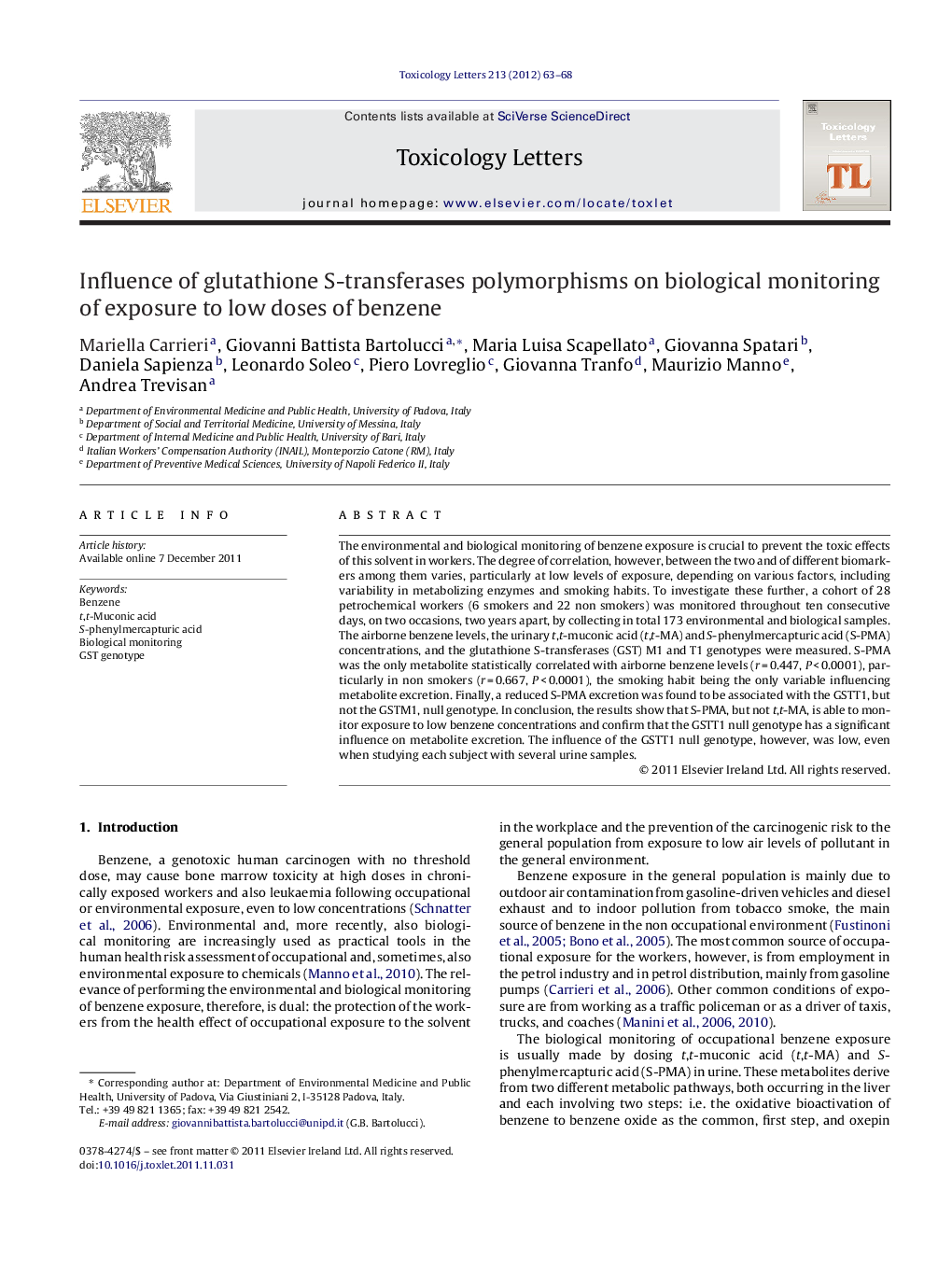| کد مقاله | کد نشریه | سال انتشار | مقاله انگلیسی | نسخه تمام متن |
|---|---|---|---|---|
| 2599484 | 1133210 | 2012 | 6 صفحه PDF | دانلود رایگان |

The environmental and biological monitoring of benzene exposure is crucial to prevent the toxic effects of this solvent in workers. The degree of correlation, however, between the two and of different biomarkers among them varies, particularly at low levels of exposure, depending on various factors, including variability in metabolizing enzymes and smoking habits. To investigate these further, a cohort of 28 petrochemical workers (6 smokers and 22 non smokers) was monitored throughout ten consecutive days, on two occasions, two years apart, by collecting in total 173 environmental and biological samples. The airborne benzene levels, the urinary t,t-muconic acid (t,t-MA) and S-phenylmercapturic acid (S-PMA) concentrations, and the glutathione S-transferases (GST) M1 and T1 genotypes were measured. S-PMA was the only metabolite statistically correlated with airborne benzene levels (r = 0.447, P < 0.0001), particularly in non smokers (r = 0.667, P < 0.0001), the smoking habit being the only variable influencing metabolite excretion. Finally, a reduced S-PMA excretion was found to be associated with the GSTT1, but not the GSTM1, null genotype. In conclusion, the results show that S-PMA, but not t,t-MA, is able to monitor exposure to low benzene concentrations and confirm that the GSTT1 null genotype has a significant influence on metabolite excretion. The influence of the GSTT1 null genotype, however, was low, even when studying each subject with several urine samples.
► Influence of GST polymorphism on benzene metabolites has been studied.
► S-PMA is preferable to t,t-MA as indicator of group exposure at low benzene levels.
► GSTT1, but not GSTM1, null genotype significantly reduced S-PMA excretion.
► More sensitive and specific biomarkers are needed as individual biological indicators.
Journal: Toxicology Letters - Volume 213, Issue 1, 13 August 2012, Pages 63–68